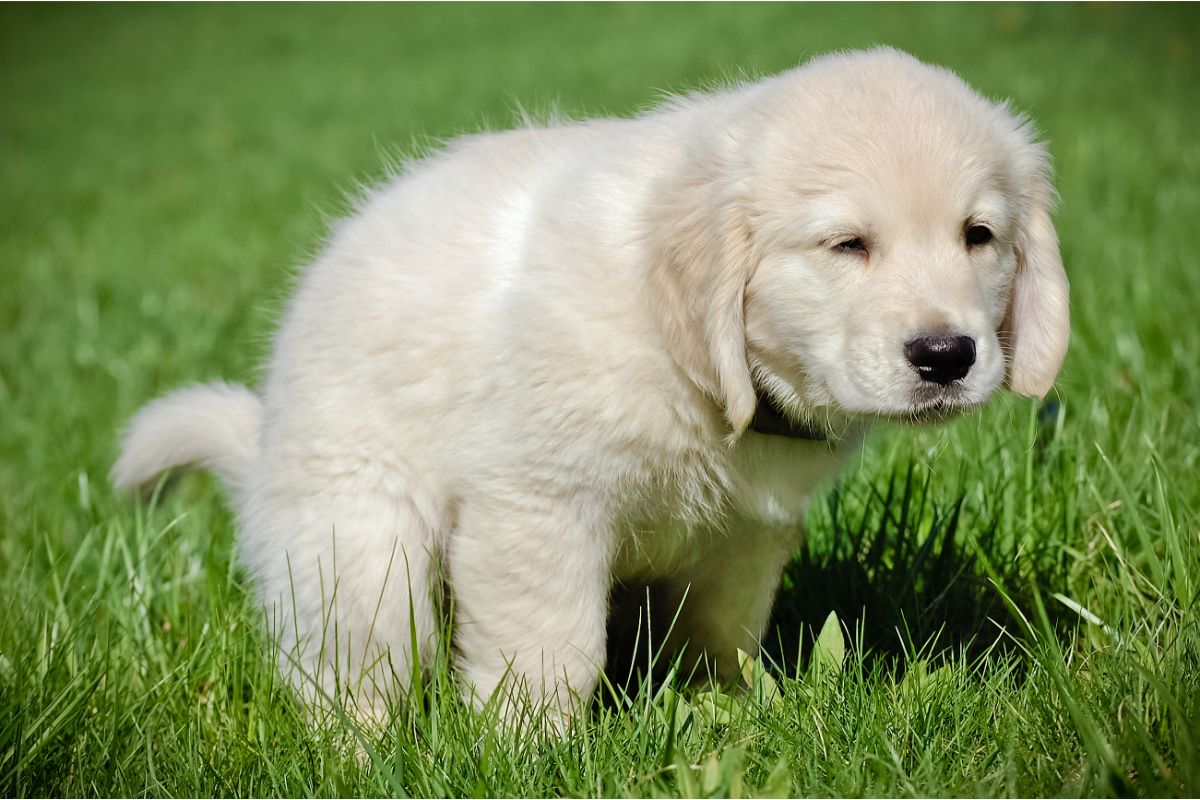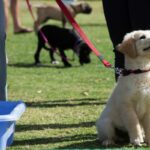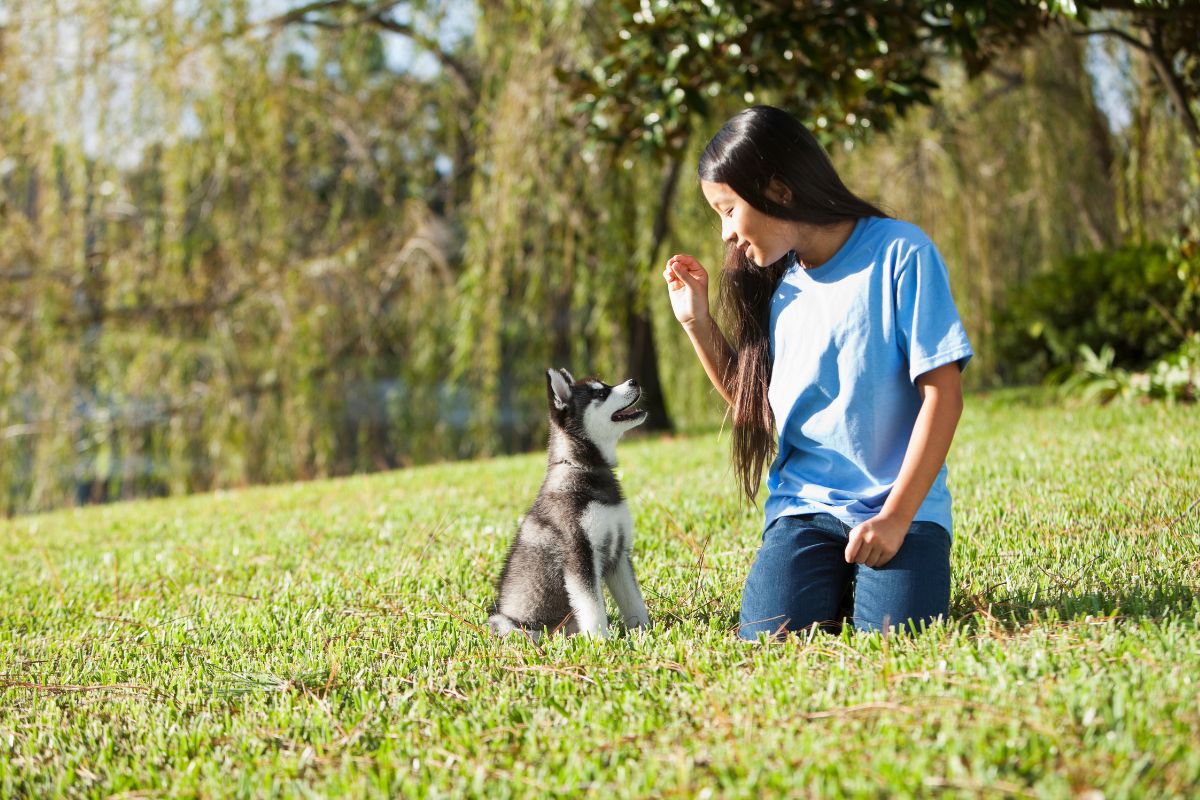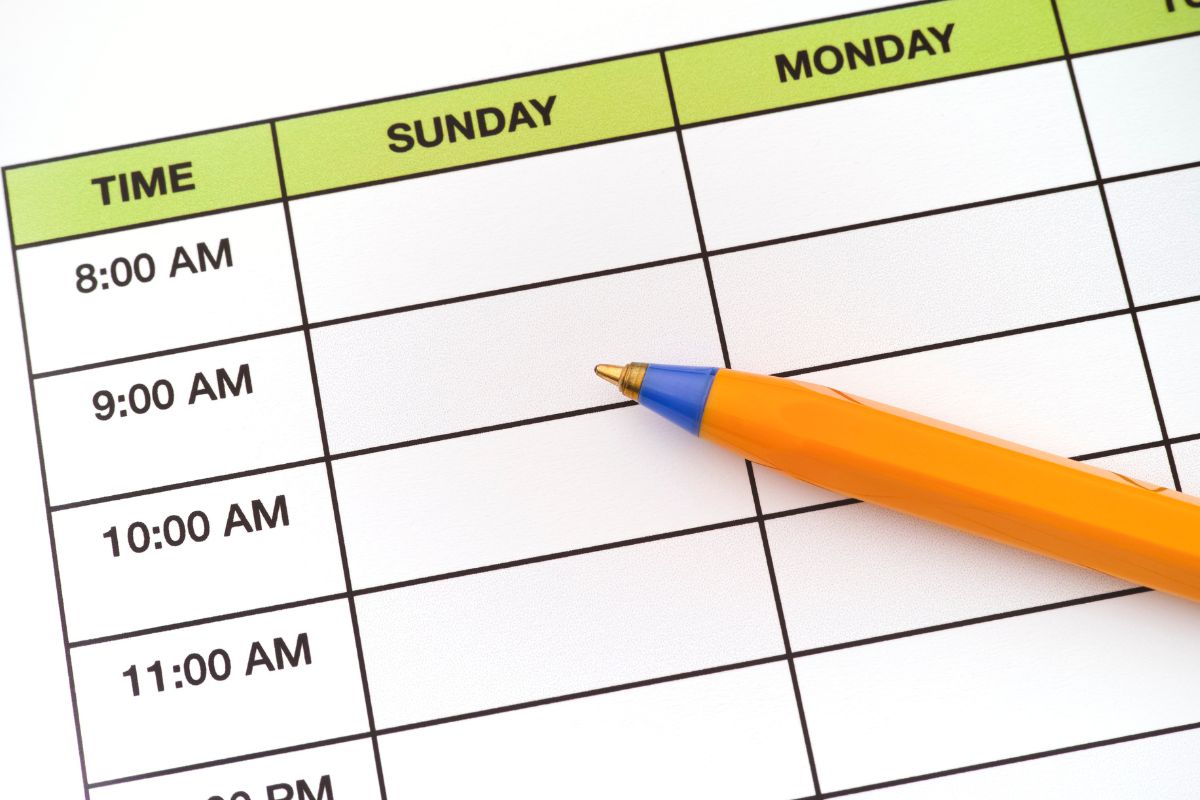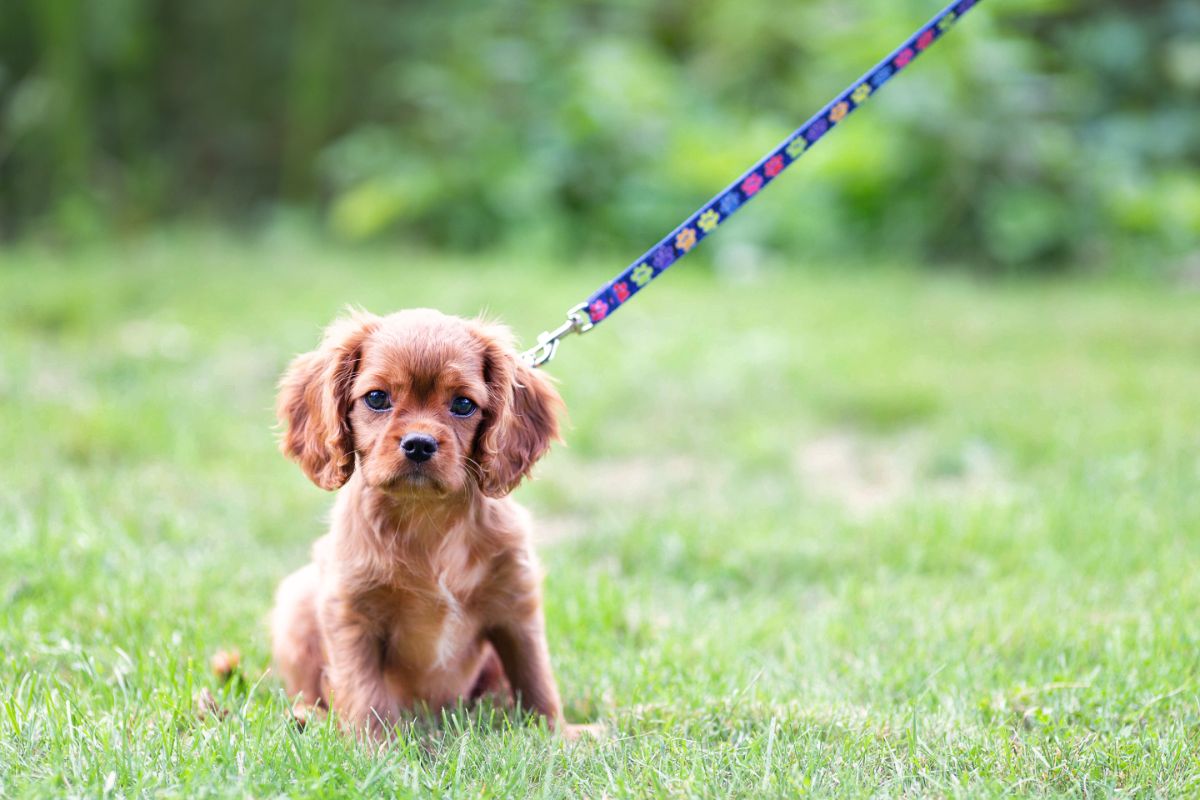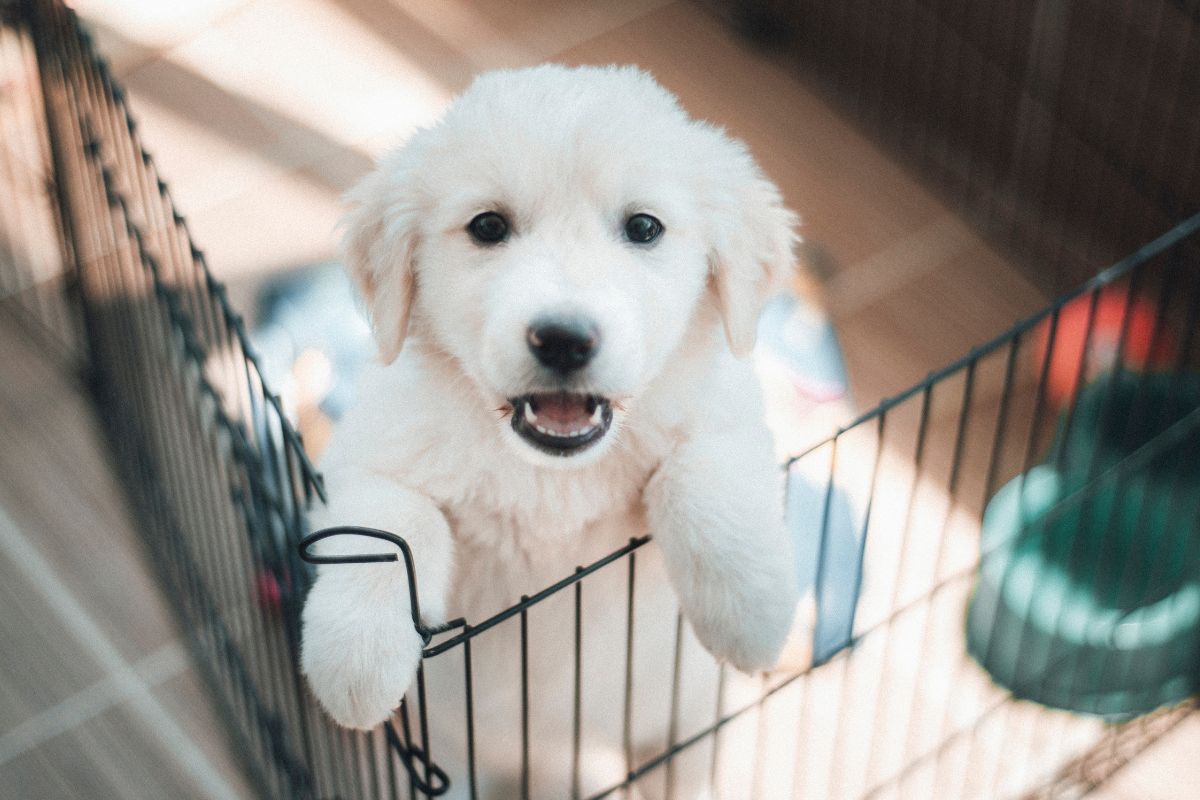Are you struggling to potty train your puppy? Maybe you can’t quite get a routine down that works for you both? Or are you curious about toilet training and want to know more?
No matter the reason that brought you here, we have the answers for you!
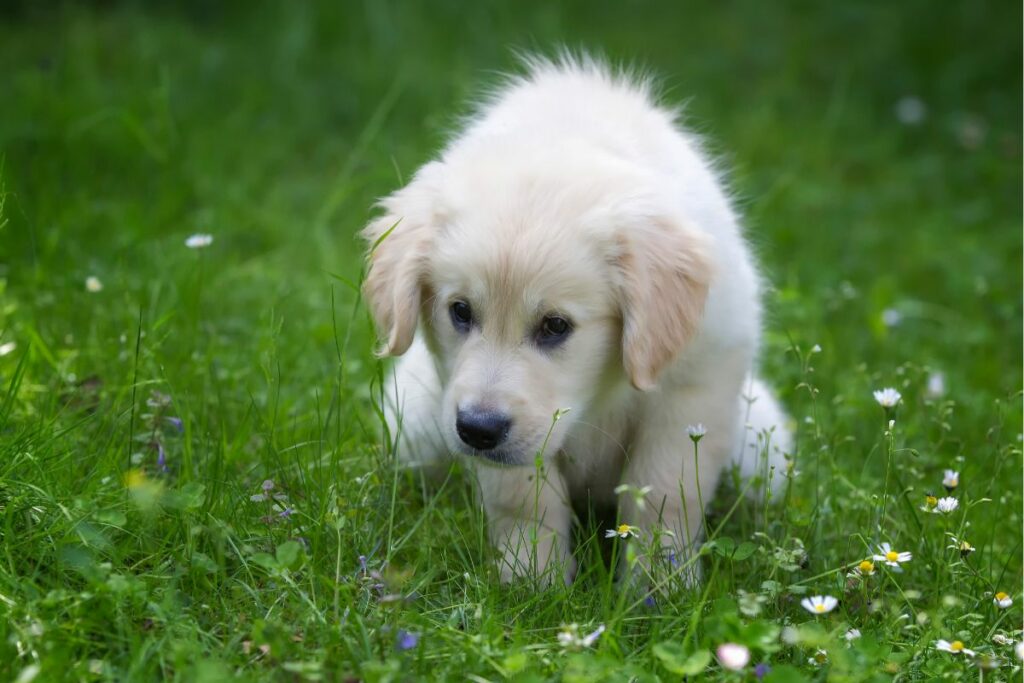
Finding a routine that works for both you and your puppy when potty training can be difficult. Knowing how long your puppy can go before needing the potty, what signs to look out for, and how to react to accidents are common issues for all new puppy owners.
But when you head online for some guidance, you are met with page after page of confusing and conflicting answers. Frustrated and overwhelmed, you are left unsure if you will ever find the answers you need.
Well, no more! Today we are here with your complete guide to creating a routine that works for you!
Check out all our guidance on a puppy potty schedule below.
The Dos And Don’ts Of Training
Before we dive into creating a routine, we first need to look at the dos and don’ts of training. After all, you can’t expect your puppy to fall into a routine and learn if you aren’t training them in the best way possible!
Here are our top tips on what to do and what to avoid to make training your puppy as easy as possible!
Do
Let’s start with what you should do!
Add Structure
A puppy schedule will add structure to your puppy’s day and help you follow the routine too. Consider what times would be best for your puppy to go to the toilet throughout the day. You should try to space them out between other activities in a way that works for you and your puppy.
For example, potty break, activity (walk, training, playtime, etc), food and water, nap, repeat. This should be a continuous cycle throughout the day from morning to night to create a sense of routine for your puppy.
Use A Leash
Put your puppy on a leash when taking them outside. Keep them on the leash while they go to the toilet, using one designated spot in your garden.
This helps your puppy associate the location and being brought to it with going to the toilet.
Add A Bell Later
Wait until your puppy has mastered training before introducing a puppy bell. They should be more mature when you give them the bell. You can use it if you want to, but as they have mastered potty training, you don’t need to rely on it as your main method of knowing when your puppy needs the toilet.
Set A Timer
Give your puppy between three to five minutes on the leash to sniff in your designated area. If your puppy doesn’t go within this time, pick them up and pop them in their crate. You can try again after ten minutes.
The second time you take them outside, your puppy is more likely to go potty. They’ve had a chance to sniff, but the time away has helped them settle down and stimulate their need to go to the toilet!
Become A Tree
You should be a still and calm presence in your designated area until your puppy has finished going to the toilet. Once they are done, your praise can start! You should include the phrase, ‘Good go potty,’ during your praise.
This helps to create the association with go potty. With time and lots of repetition, your puppy will understand that ‘go potty’ means it is time to go!
Add Relaxation Time
Build in some crate relaxation times after your puppy’s food and playtime. This helps them to settle before their next potty break and prevents accidents too.
The downtime in their crate will teach your puppy to hold their potty. Movements can stir the bladder and bowels. As dogs don’t like to soil where they sleep. Putting your puppy in their crate will act as an instinct. It will encourage them to relax until their potty break!
If your puppy will be alone for long periods and won’t be able to go for their potty break, use a playpen with potty pads. Over a large area of the playpen with pads so they don’t miss their spot!
As your puppy learns to go on the pad, remove a free one at a time. Using potty pads will not teach your puppy to be potty trained on their own.
You should still make use of the crate where possible to speed up the training process and encourage your puppy to hold it!
Don’t
And what should you avoid? Find out below.
Let Your Puppy Go At Random Times
You should not let your puppy go potty whenever they want. Leaving your door open and your puppy off the leash might seem like a good idea, but it won’t help with training. Puppies don’t know they should go outside to go potty, this is a habit you need to repeatedly show your pup.
Secondly, this does not teach your puppy to hold its bladder. As they can go to the toilet whenever they want, you will end up with an older dog that needs regular potty breaks, rather than designated times throughout the day.
Let Your Puppy Sniff
You don’t want your pup to be roaming and sniffing for a few minutes to find their spot. They probably aren’t looking for a good place to go to the toilet, but rather exploring the new space!
Also, if your puppy goes to a different spot every time they are taken outside, they might not understand they have been brought to the toilet. They think you are just showing them a new space!
Use A Potty Bell
Avoid using a potty bell while your puppy is still training. Using a bell does not enforce potty training, simply to go outside. Instead of using the bell to let you know when they want the toilet, they will use it any time they want to go out!
Wait For Ages
You shouldn’t wait for extended periods, say fifteen minutes or more, for your puppy to go potty. Sometimes your puppy will get distracted when they first go outside, after all, there are lots for them to sniff and see!
They can forget they need to go potty during the time they are exploring. By waiting, you aren’t creating urgency. Instead, you are creating opportunities for accidents in your home as your puppy hasn’t gone potty outside.
Praise Before They Are Done
Avoid giving rewards or praise before they have finished going to the potty. If you praise your puppy while they are going, they can stop mid-way through and finish in your home, leaving you with a mess to come up with! It is better to wait until they are finished before offering praise.
Let Your Puppy Roam
You don’t want your puppy to roam the house freely and wait for the signal they have to go. This can lead to accidents in your home, as most puppies won’t understand that they need to go and should go outside.
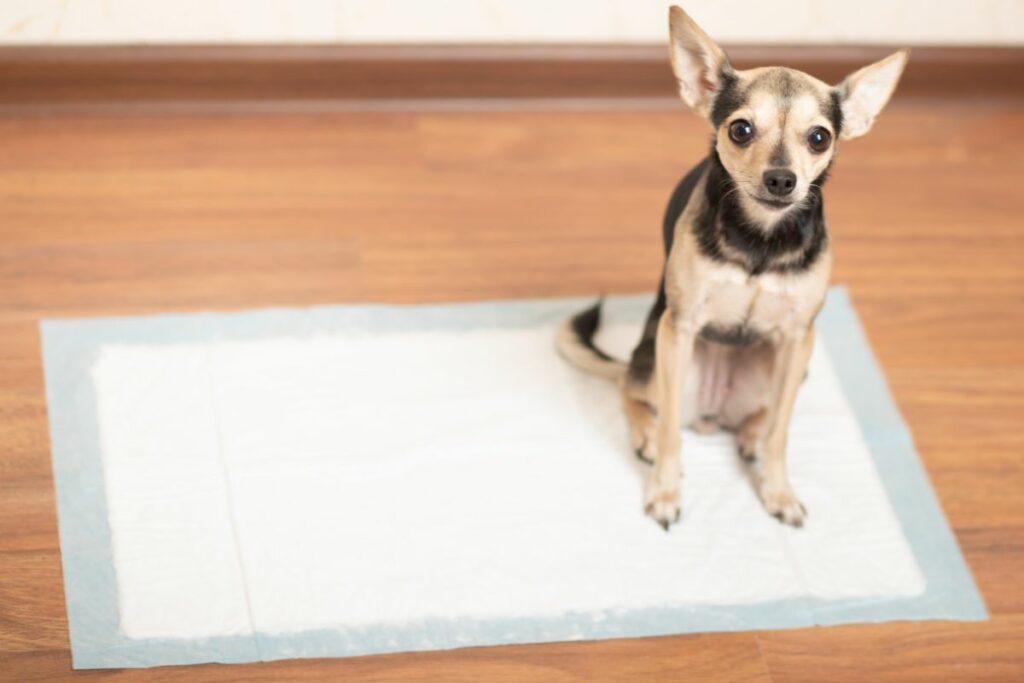
Creating Your Potty Training Schedule
Now that we have established what you should and shouldn’t do, let’s take a look at creating a training schedule! There are a few factors that you should consider when creating your puppy’s potty training schedule.
You need to determine how often and when your puppy should be let out, how to break up their day and schedule their breaks in between other activities. Doing so will help your puppy to create a structure and routine that will speed up potty training!
Read on to see how to do this.
When Should I Schedule The Potty Breaks?
To work out how often your puppy needs to go potty, we have a general guideline you can follow. Take your puppies’ age (in months) and divide them in half. This tells you how long they can go in between potty breaks. A four-month-old puppy can usually go two hours before they need a potty break.
Your schedule might start at 6 am when you wake up for work. Take your puppy out immediately and then again at 8 am. The formula is then repeated throughout the day until your puppy goes to bed.
Once you have established your puppy’s wait period, you need to calculate the amount of time your puppy should be in their crate. Let’s use a three-month-old puppy as our example. At three months old, your puppy can hold their potty for 1 and half hours.
Start with thirty minutes of free time and an hour of crate time before their next potty break. Longer free time at a young age can lead to more accidents, so you want to keep this time short! You can adjust this time depending on how long your puppy goes without an accident.
During free time, your puppy can be in their playpen playing with safe chew toys, having interactive play time with you, puppy training, or on a walk if they have had their vaccinations.
Next, you want to establish a wake-up time every day and when your puppy will have their meals. We used a younger puppy’s feeding schedule for this, who would typically have three smaller meals a day.
The schedule will start with your wake-up time and your puppy’s first potty break. The rest of the day is broken into increments of an hour and a half (for a three-month-old puppy) of potty breaks.
To get a better idea of what this schedule will look like, we have one below for you to check out! This is based on a three-month-old puppy. Your daily schedule could look like the table below.
| Potty Time | Free Time | Meal Time | Rest Time |
| 7 am | 30 mins | 7.30 breakfast | 1 hour |
| 8.30 am | 30 mins | 1 hour | |
| 10 am | 30 mins | 1 hour | |
| 11.30 am | 30 mins | 12 pm lunch | 1 hour |
| 1 pm | 30 mins | 1 hour | |
| 2.30 pm | 30 mins | 1 hour | |
| 4 pm | 30 mins | 1 hour | |
| 5.30 pm | 30 mins | 1 hour | |
| 7 pm | 30 mins | 7.30 dinner | 1 hour |
| 8.30 pm | 30 mins | 1 hour | |
| 10 pm | 30 mins | 1 hour | |
| Before bed | Last potty | Bedtime |
We based this schedule on a puppy needing over eighteen hours of sleep a day. You can adjust the times for meals, free time, and potty time as you see fit for your puppy’s needs. As your puppy grows too, you will want to update the schedule. We recommend doing this fortnightly in line with your puppy’s needs.
Of course, this schedule can be difficult if you do not work from home or are not with your puppy all day. You can ask friends or family to help out with the schedule or use potty pads as we mentioned earlier, whichever works best for your life.
Ideally, you want to match your puppy’s schedule as closely as possible with yours. Otherwise, it is going to be unattainable for you. You want to create consistency and structure as this helps to speed up potty training.
Don’t panic if you can’t follow it every day. Do what you can as often as you can while you are at home for success!
As your puppy grows, their wait, crate, and free time will increase. This will give you a lot more freedom, allowing you to leave your puppy for longer. This means your schedule will need to be updated. We say to update it every two weeks or so.
You can increase the potty break intervals by fifteen to thirty minutes as you adjust the potty training schedule. Of course, this will depend on your puppy and how they are doing, you might need to adjust the times differently to suit your puppy’s needs.
Make sure that everyone in your house is aware of the schedule. You don’t want there to be any lapses in your puppy’s potty training!
We recommend printing out a copy of your schedule and leaving it in an area everyone will see like taped to a kitchen cupboard. You can tick off every break your puppy has to ensure the schedule is being followed correctly.
If everyone in your household isn’t on board or following the schedule correctly, it will slow down the process and can confuse your puppy too. Make sure everyone agrees before you start the schedule!
What Should I Do When My Puppy Has An Accident?
Even with the best training schedule, your puppy is bound to have an accident from time to time. After all, they are only babies, it will take them time to get on board with the routine. When your puppy has an accident, you can use this as feedback to your schedule.
You might have too big a gap between your potty breaks and they need to be lowered. Decrease the time between your potty breaks for a few days to see if there is an improvement. You want there to be a shorter gap between your puppy’s toilet break and free time.
After a few days, you can increase the time again once your puppy has stopped having accidents. It isn’t uncommon for the gap to decrease and increase again.
Sometimes you will make the wait time bigger than your puppy can wait for. When this happens, don’t panic! Every puppy trains at different times, with some taking longer to have bigger wait periods.
If your puppy has accidents during the schedule, increase the wait time slowly. Increase the times by ten to fifteen minutes and leave a few more weeks between each increase. This will allow your puppy more time to get to grips with the schedule.
After all, you want to build their confidence and routine up, not move too fast, and cause more accidents in your home.
Final Thoughts
And there you have it, your complete training schedule for your puppy! This schedule will allow you to potty train your puppy quickly and sustainably.
Sure, the schedule can be a little intense at first, but over time, the gap between each potty break will increase and the number of accidents your puppy has should decrease.
Remember to tailor your training schedule to your puppy’s needs, and don’t panic if you need to make adjustments or work at a slower pace than others. Just like people, every puppy is different, so be sure to work at a pace that suits your puppy.
Frequently Asked Questions
Before you leave us, check out our brief FAQ section to get the answers to your last-minute questions!
Should I Keep My Puppy On A Leash When Going Potty?
Yes, until your puppy has mastered potty training, put them on a leash when they are outside. This eliminates the time they spend sniffing around and allows you to keep a better eye on them.
Take them outside for three to five minutes to their designated spot and keep them on the leash at all times.
How Long Will Potty Training My Puppy Take?
This depends on your puppy and the schedule you create. Some puppies master training in a few weeks, while others will take a few months.
Don’t panic if your puppy is taking longer than others, it is more important that you work at their own pace!
- How To Teach Your Puppy Their Name Easily! - July 18, 2023
- Is Your Puppy Counter Surfing? Find Out How To Stop It! - July 18, 2023
- How To Train Your Puppy For Car Rides: Everything You Need To Know - July 18, 2023


